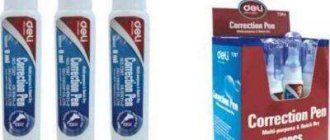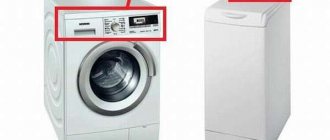For a person who does repairs with his own hands and does not have the appropriate experience, it is difficult to choose.
Disputes about which material is preferable to use for sealing threaded connections—plumbing flax or fum tape—do not subside even among specialists.
Most master plumbers have long decided for which work it is preferable to use one or the other option.
It is necessary to focus on the properties and features of each material.
Changing priorities
Tow has been used for sealing threaded connections for quite a long time.
Initially, the main material for production was hemp fiber.
However, they were not uniform in thickness, making high-quality, uniform winding on the thread difficult.
Hemp tow has been replaced by sanitary flax, the properties of which are determined by GOST 10 330-76.
It is a natural product made from combed flax.
As a result, an array of thin, uniform, long fibers is obtained:
- the material has flexibility and strength sufficient for high-quality winding on thread turns and the formation of a complete sealing layer;
- sanitary linen does not lose its properties at temperatures up to 160 degrees (options for alternative heating of a private house are written here);
- During operation, natural flax fiber does not release toxic substances into the water and air.
What is plumbing thread
Sealing plumbing thread is 280 polymer microthreads impregnated with a special composition that increases the sealing properties of the thread. In addition to all kinds of fillers, the plumbing thread contains silicone , which protects the threaded connection from corrosion.
Advantages and disadvantages of flax fiber
Experts note the following advantages of flax.
- The hygroscopic material, when absorbing liquid, swells and blocks, due to a noticeable increase in volume, any smallest leakage channels.
- Flax is universal and can be used as a sealing agent on pipeline connections transporting almost any media, on pipes of any diameter and with any thread pitch.
- The reliability of the connection turns flax into the only material that allows you to accurately orient the fittings, for example, when installing mixers or siphons on sanitary ware or sanitary porcelain (written in this article), and measuring equipment, and adjust the connection.
It allows, without loss of tightness, to turn the parts back at an angle of up to 180 degrees (half a turn of thread). - Flax winding can be applied to unprepared threads with traces of rust, dirt, and surface defects.
During operation, when the fibers swell, a reliable sealing layer is formed. - From an economic point of view, flax is the cheapest sealant.
Do you know which bathtub is better, acrylic or cast iron? This useful article details the advantages and disadvantages of some over others.
How to install toilet armrests for the disabled with your own hands, read on this page.
All these properties have led to the widespread use of sanitary flax, and even the latest materials that have appeared today, thanks to advances in chemistry, still provide worthy competition (read about installing faucets for hydromassage bathtubs on board a bathroom here).
However, flax fiber is not without some disadvantages:
- organic material deteriorates over time under the influence of moisture and/or high temperature.
When heated, it dries out, the fibers lose strength and elasticity, and disintegrate into dust.At low temperatures and constant exposure to moisture, flax is prone to rotting.
Protective impregnation of the material helps combat this disadvantage. For this purpose, mastics, red lead, and oil paints were used.
However, eliminating the disadvantage of the material itself, they led to the formation of difficult-to-disassemble joints, which were impossible to dismantle without significant effort (watch the video on how to install a tulip sink here).
Silicone and special sealing pastes have replaced traditional impregnations
For your information ! The use of silicone also reduces the maintainability of the joints, since when such impregnation dries, it is difficult to dismantle the parts.
Sealing pastes provide effective protection of sanitary flax, leaving the connection dismountable;
- use of sanitary flax requires preliminary preparation of the thread.
It is problematic to apply flax winding to a smooth thread, and when screwing together the parts, the fibers may become tangled.Do you know how to properly connect the drain from a washing machine to the sewer? Methods for installing complex household appliances with utilities are described in a useful article.
Read the instructions for using Calgon for washing machines here.
The page: https://ru-canalizator.com/vodosnabzhenie/truby-i-furnitura/gidravlicheskij-udar.html describes how to calculate water hammer in pipelines.
To prevent such a situation, it is advisable to make several notches on the surface;
- material requires careful adherence winding rules, otherwise significant additional mechanical loads arise in the mating parts, which can lead to destruction.
Attention! The use of tow when installing thin-walled fittings, plastic and metal-plastic pipes requires special, careful attention (read about the dangers of water hammer in the heating system of a private home in this article).Mechanical loads arising due to the swelling property of flax fiber, as well as the forces required when tightening the connection, easily destroy the parts.
TOWHEEL or LINEN
These are natural fibers (in fact, tow and flax are the same thing), our grandfathers and great-grandfathers used them to “wind” (seal the joints). And you know what I want to say - THIS is the BEST way today, it has not lost its relevance. And the heating system needs to be sealed EXACTLY on them.
It is worth noting that now a special paste is sold with tow, which is applied to it and makes the connection much more airtight.
So why use Paklya for heating:
- It's cheap . A bunch, together with paste, costs about 60 rubles. For comparison, a thread costs about 300 rubles
- Has the ability to expand . As I wrote above, if you turn down the heating, the metal contracts, even if leaks appear somewhere, then LEN quickly becomes saturated with water - it expands and effectively eliminates the leak
- Perfectly seals . If you learn how to “wind” correctly, you will understand that the sealing is simply excellent; tow has very thin fibers that cling well to the thread. Moreover, many couplings now have special notches in order to even better hook these tiny fibers
After I rewinded all the heating radiators , the leaks stopped and the pressure stopped dropping.
REMEMBER - it is correct to do HEATING EXACTLY on TOWHA! It will work for years and will not cause you any problems.
Synthetic seal
FUM tape (what is it) is a thin polymer waterproofing tape made from fluoroplastic-4.
Tape with a thickness of 0.1 to 0.14 mm and a width of 10 to 60 mm is becoming increasingly popular due to its properties:
- FUM demonstrates high tensile strength and elasticity;
- the material is not exposed to moisture, active chemicals, or biological destruction;
- fluoroplastic seal can be used in a wide temperature range – from -60 to +200 degrees.
Important Note! At temperatures above 260 degrees, the fluoroplastic material that forms the basis of the material releases volatile fluoride compounds that pose a danger to human health.Therefore, it is recommended to use synthetic materials when laying cold water supply pipes, for example, when creating a do-it-yourself automatic watering system;
- FUM tape is easy to install , filling the unevenness of the thread, which ensures the rapid creation of a tight connection;
- the properties of fluoroplastic practically do not change for a long time;
- the connection, sealed with FUM tape , can be easily dismantled;
- thin material does not pose a risk of mechanical destruction of parts when using polymer and metal-plastic pipes, thin-walled fittings and small threads.
The list of advantages of the material is impressive, but disputes about the advisability of using FUM tape for sealing arise due to its disadvantages:
- on large diameter pipes, with increasing gaps between the connection parts and the width of the thread pitch, it is problematic to ensure reliable sealing with a material with a thickness of about 0.1 mm.
In such conditions, significant consumption of expensive sealant will be required.In this case, additional problems arise associated with the limited length of the material on the reels;
- Another problem with using FUM is associated
with increasing gaps When heated, significant changes in water temperature (what should be in hot water supply pipes, you will find out here), especially if the connection parts have different coefficients of thermal expansion, the laying density is disrupted, which leads to the formation of leaks; - when working with FUM, difficulties may arise due to the low coefficient of friction of fluoroplastic and the use of lubricant in the composition of the most common FUM-1 material - petroleum jelly (up to 20%);
- defects and imperfections of the thread , such as cavities and burrs formed when using hand tools for cutting, or sharp edges obtained as a result of blade processing of workpieces, violate the integrity of the tape, which makes it impossible to obtain a high-quality seal;
- When using fluoroplastic tape, it is impossible to release a tightened connection or turn back the installed fittings by more than 45 degrees without losing the tightness.
If such an operation is necessary, the pipe connection (what diameter is best for the water supply in an apartment is written here) has to be disassembled and reinstalled.
Characteristics of plumbing thread
Plumbing thread is made of polyamide or fluoroplastic . Depending on the material, the thread has some differences in characteristics.
Polyamide thread
- Withstands temperatures up to 130 °C.
- Inertness to aggressive environments.
- Withstands water pressure of 16 atm.
- Gas pressure
Fluoroplastic thread
- Temperature range up to 200 °C.
- The composition and properties of fluoroplastic thread are similar to FUM tape.
- Withstands pressure up to 30 atm.
- Superior to polyamide thread in wear resistance and resistance to aggressive environments.
Advantages of plumbing thread
- High temperature maximum.
- High wear resistance .
- Long service life. More than 15 years.
- Ability to adjust the connection without the risk of leakage.
- Does not require thread surface preparation.
- Easy to use.
- Immediately after pairing the parts, it is ready for use.
- Vibration resistance.
- Resistant to temperature changes.
- While working with plumbing thread, your hands and the surface of the material remain clean .
Disadvantages of plumbing thread
- Despite its high resistance to aggressive environments, it is not advisable to use the material in contact with chlorine, pure oxygen, gasoline, or diesel fuel.
- High material consumption on large diameters (an inch thread requires an average of up to 140 cm of material)
- Quite a high cost.
- Not suitable for tapered threads.
Areas of application
The advantages and disadvantages of each material determine their specific areas of application.
Plumbing flax is used for sealing threaded connections on steel pipes. It is preferred for thread diameters greater than 1" and in cases where the thread has obvious defects.
This type of seal has proven itself to be excellent on pipelines intended for transporting hot media, for example, heating pipelines.
It is better to use flax in cases where a highly reliable connection is required, for which there is no need for dismantling.
Fum tape is used:
- when installing plumbing fixtures , installing measuring equipment and control valves;
- on steel pipes with a diameter of up to 1” with high quality threads;
- when connecting sections of copper pipelines using threaded fittings;
- on pipelines made of polymeric materials and metal-plastic, when using thin-walled fittings, products made of copper, brass, bronze;
- when working with small threads.
It should be noted that for use in work inside an apartment or private house - installation of cold and hot water supply systems, heating systems, the disadvantages of FUM are not critical.
It’s faster and more convenient to work with it, and you get high-quality and aesthetically pleasing connections.
Therefore, for a person who performs the listed work with his own hands, the choice in favor of this material is completely justified.
Attention!
Regardless of the choice of material, it is possible to obtain high-quality sealing of threaded connections only if the technologies for using seals are followed!
Manufacturers of plumbing threads
Brief characteristics of the most popular brands of plumbing thread.
Plumbing thread Tangit UNI-LOCK (Tangit Unilok)
Europe . The German company Henkel, under its control, produces the Tangit UNI-LOCK brand.
- Temperature range: gas: -20°С + 70°С hot water: + 130°С
- Pressure: For gas : up to 5 atm. For hot water + 130°C, withstands pressure up to 7 atm . For hot water up to + 85°C, withstands pressure up to 16 atm.
- Possibility of adjustment up to 180° within three days after installation of the connection.
- Service life in conditions of high temperature and vibration is 10-12 years.
- Not used for pipelines with oxygen, gasoline, diesel fuel, chlorine.
- It is allowed to use gases of 1-3 categories of aggressiveness (the difference in pressure in the gas pipeline system is from 5 kPa to 1.2 MPa ).
Plumbing thread Record
Russia . Plumbing thread Record is priced significantly lower than its most popular competitors, but according to professional plumbers, the quality is no worse.
- Temperature range -60°C + 120°C.
- Possibility of adjustment to 180°.
- Service life is 20 years.
- The lowest price from the presented manufacturers of plumbing thread.
- Despite the relatively low price, there is little difference in quality.
- Not very convenient container for sealing thread.
Plumbing thread Loctite (Loctite)
Europe. The Loctite brand, like Tangit UNI-LOCK, belongs to the German company Henkel.
- The product 68 atm pressure test for cold water.
- Loctite tape also passed a steam test with a pressure of 2 atm for 1,000 hours.
- Withstands gas pressure of 20 atm.
- Temperature range -10°С + 150°С.
- Recommended maximum diameter is 4 inches.
- Possibility of adjustment up to 45° within three days after installation of the connection.
- Can be used for gases of 1-3 aggressiveness categories.
Plumbing thread Sprint (Sprint)
Russia. It is also a very good option for inexpensive and high-quality products.
- You don’t need to buy new plumbing thread every time just change the bobbin .
- Operating temperature -60°С +120°С.
- Recommended pipe diameter is 1 1/4 inches.
- Withstands pressure of 24 atm.
- Possibility of adjustment by 180°.
- Manufacturer's warranty for 5 years.
Terms of use
The use of both types of sealing materials requires compliance with simple winding rules.
Technology of using sanitary flax:
- to securely fix the material, it is necessary to make notches on the threads, for example, with a hacksaw or file;
- the fiber is first impregnated with protective sealing materials - mastics, silicone pastes;
- lay the fiber in the grooves of the thread (how to cut it on a pipe with your own hands), avoiding overlaps;
- winding is carried out in the direction of screwing (for right-hand threads - clockwise);
- after winding, the layer of material is covered with sealing pastes, mastics or silicone;
- the connection is tightened all the way using keys;
- The fibers remaining on the surface are removed by cauterization.
Winding FUM tape
- A fluoroplastic tape sealant is applied along the thread so that the material is compacted when screwed.
- To ensure high-quality thread filling during tape winding, it provides tension.
- The tape is applied in several layers, the number of which depends on the diameter of the pipe.
The minimum number of layers is 2, for threads 15-22 mm three layers are used, 25-40 mm - 4 layers of material. - When winding, do not allow the tape to twist; make sure that the end of the tape does not disturb the uniformity of laying.
Otherwise, it will not be possible to obtain a high-quality seal, and when twisting, the tape may break.
Anaerobic gel sealants: sanitary gel ↑
Another modern material for sealing pipe threads is sanitary gel. Reliable compaction occurs due to the polymer component of the gel. After hardening, sanitary gel does not shrink or expand, is resistant to temperature changes (from -60 to +150) and pressure surges, and has proven itself in various environments: water, natural and liquefied gas, heating antifreeze.
How to seal a plumbing connection: flax, fum tape, anaerobic sealant - a specialist decides
Sanitary gel is produced in three types:
- In green tubes - easy dismantling. In blue tubes - medium dismantling. In red tubes (Stop Master Gel) - heated dismantling.
Installation using sanitary gel is simple: shake the tube and apply the gel in a thick layer around the entire circumference of the thread, distribute it evenly (with a brush, a special spatula), and assemble the structure. Excess gel is removed with a rag. Polymerization of the gel occurs in 15–20 minutes.
Important: Sanitary gel should only be applied to a clean, grease-free surface.
Characteristic properties
These products differ in a number of technical properties, knowledge of which helps to choose the right option for a particular situation. The following characteristics can be distinguished:
- The level of fluidity, that is, the viscous property. For small voids, thick types of compositions are needed; for large areas, it is more convenient to use liquid types;
- Temperature and ability to withstand temperature effects vary among products. The standard range varies between -50 and +150 degrees, but there are also types that can withstand lower temperature influences;
- The level of strength, how tightly the sealant will connect the parts, and how difficult it will be to dismantle it, this is how products of low, medium and strong strength are distinguished;
- Hardening speed, this parameter is indicated on the label;
- The largest thread diameter possible for coating;
- Purpose: There are sealants that contain toxic substances, so they cannot be used for drinking pipes.
For small voids, thick types of compositions are needed; for large areas, it is more convenient to use liquid types.
Cold welding
A plasticine-like two-component composition based on epoxy resin, when connecting both parts, turns into a strong glue.
Advantages:
- some types of cold welding can be applied to a wet surface and under water;
- the resulting mass can be given the desired shape and processed after hardening.
The disadvantage is the high price.
Cold welding is indispensable when it is necessary to eliminate a leak, but there is no time for disassembly or the possibility of shutting off the water supply. Usually this solution is temporary.
Cold welding can restore a thread or a broken part. It is enough to apply the mixture to the damaged area, screw it on, and then unscrew the joining element and wait for it to cure.
Rules for working with fum tape
The first rule of working with fluoroplastic seals is the correct choice of material. For high-quality connections, only those films that stretch well are suitable. All the rest will eventually begin to crack and turn into crumbs.
In order to avoid installation errors, you need to know how to wind fum tape onto a thread. Masters advise you to remember a few simple rules and adhere to them in your work.
There are no recommendations for the number of turns to be wound. You need to look at the parameters of the tape: its thickness and width
You also need to pay attention to what kind of thread it is. When winding the film, it is slightly stretched. The tape should fit into the grooves of the thread and fit tightly around them. If the film breaks during winding and stretching, place the free end on the thread and continue working. Winding is carried out until all the threads are hidden under the tape.
Its ribbing should look smoothed, but visible through the seal.
Masters claim that the skill of using fum tape comes quickly. It is enough to practice several times and understand the principle of working with this material.











